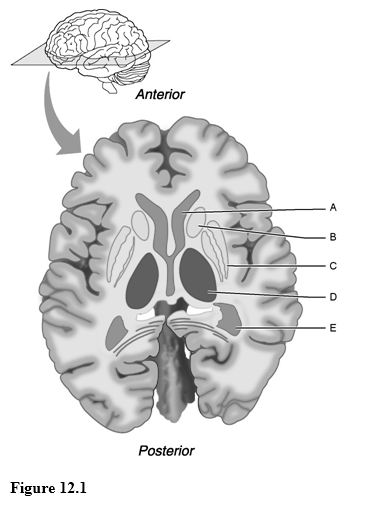Which of the following is not true of meningitis?
A) Inflammation of the meninges occurs.
B) Bacteria can be the cause.
C) Viruses can be the cause.
D) CSF flow can be disrupted.
E) It only affects spinal meninges.
E
You might also like to view...
The optic chiasm:
A) is in the orbit. B) refers to the central artery of the retina's crossing of the subarachnoid space. C) refers to partial splitting of the optic nerve fibers from each side to form the right and left optic tracts. D) refers to the missing field in visual field deficits. E) occurs in the lateral geniculate body.
Using Figure 12.1, match the following:

1) Afferent impulses from all senses and all parts of the body converge here and synapse with at least one of its nuclei.
2) Putamen.
3) Anterior horn of lateral ventricle.
4) Inferior horn of lateral ventricle.
5) Part of the basal nuclei.
6) Thalamus.
You are constructing working models of the heart for extra credit. Your first attempt failed because the cells separated from each other during beating. What structures did you omit, and why did this allow the heart to fall apart? You omitted the gap junctions in your second attempt. How would a real heart fail to function normally without gap junctions?
What will be an ideal response?
An example of an anabolic reaction is
A) glycerol reacting with 3 fatty acid molecules to yield water and proteins. B) a dipeptide breaking down into two amino acids. C) glycogen breaking down into many monosaccharides. D) many monosaccharides bonding, forming glycogen.